market dynamics
Discerning Opportunity from Distraction: A Guide for Multifamily Leaders

Photo by Nubelson Fernandes on Unsplash
Leaders frequently face several opportunities that promise growth, innovation, and success. However, a discerning eye is crucial to differentiate genuine opportunity from a distraction masquerading as beneficial prospects. Let’s dig into the art of distinguishing between the two, tailored specifically for multifamily leaders and business professionals.
The multifamily space often presents scenarios where what appears as a golden opportunity could, upon closer examination, be a detour from core objectives as organizations. Understanding the difference is critical for success and growth.
Understanding the Landscape
The landscape is filled with technological advancements, market shifts, consumer behavior changes, not to mention team member expectations. Each of these elements brings its own set of opportunities and challenges. Leaders must analyze these trends, understand how they align with their organizational vision, and determine whether they present real opportunities or potential distractions.
Aligning with Vision and Goals
The key to differentiating between opportunity and distraction lies in how well an option aligns with your organization’s long-term vision, values, and goals. A genuine opportunity will drive you closer to your strategic objectives, whereas a distraction will divert your resources and focus no matter how lucrative it may seem.
Assessing Resource Allocation
Resources, both human and financial, are finite in any organization. Assessing whether a new venture warrants allocating these valuable resources is critical. If an opportunity demands more than it returns in the foreseeable future, it might be a disguised distraction. In any scenario, it is wise to use a business case analysis tool to help decision-making.
Evaluating Risk vs. Reward
Every opportunity carries a degree of risk, but not all risks are worth taking. Multifamily leaders must evaluate the potential rewards against the risks involved. An opportunity that presents an asymmetric risk-reward scenario, where the potential losses far outweigh the gains, is likely a distraction.
Seeking Collective Insight
In multifamily companies, decisions are rarely made in isolation. Leveraging the collective insight of your team can provide diverse perspectives, helping to identify the true nature of the opportunity at hand. A decision deemed incongruent with the organization’s trajectory is a red flag.
Long-Term Impact
While some opportunities offer immediate gains, their long-term impact might be negligible or negative. True opportunities will positively affect the organization’s long-term sustainability and growth, whereas distractions will have a fleeting or detrimental effect.
Innovation vs. Trend-Chasing
In the digital age, catching up on the latest trends is easy. However, not all trends translate into viable business opportunities. Innovative ideas that contribute to your organization’s unique value proposition are opportunities. Conversely, trends that deviate from your core competencies are often distractions.
For multifamily leaders, distinguishing between opportunities and distractions is more than a skill. By aligning choices with organizational goals, assessing resource allocation, evaluating risks and rewards, leveraging collective wisdom, and focusing on long-term impact and innovation, leaders can effectively navigate the multifamily space, turning potential distractions into well-calculated, strategic opportunities.
Share this:
The 2024 Multifamily Real Estate Landscape: Trends and Counter-Trends

Photo by FORTYTWO on Unsplash
The multifamily space presents a fascinating set of traditional trends and counter-intuitive ideas in 2024. This year, the industry is not just about seeing and acting on market trends; it’s about understanding and capitalizing on the evolving nature of the industry. This brief overview teases the industry’s mainstream trends and unconventional ideas, setting the stage for the future of multifamily.
Mainstream Trends
- Historic Surge in Construction: 2024 is witnessing an unprecedented completion of multifamily units, driven by a strong pipeline from previous years. However, this boom is expected to be short-lived due to a downturn in new construction starts, leading to heightened competition.
- Rental Market Stabilization: After periods of volatility, the rental market is stabilizing, with steady, modest growth in rental rates. This reflects the market’s search for equilibrium.
- Long-term Rentals Over Homeownership: High mortgage rates and unaffordability in the home-buying market are shifting preferences towards long-term rentals.
- Hybrid Work and Living Spaces: Adopting hybrid work models impacts multifamily real estate, increasing demand for home-office compatible living spaces.
- Technological Advances in Property Searches: AI and advanced technologies are enhancing the efficiency and personalization of multifamily property searches.
- Environmental Sustainability: Eco-conscious consumers drive the demand for energy-efficient, sustainable living options.
- Demographic Shifts and Diverse Housing Needs: The market is responding to demographic changes, such as aging populations and the rise of millennial and Gen Z homebuyers, necessitating diverse housing solutions.
Counter-Intuitive Ideas
- Redefining Luxury: Moving away from traditional opulence, there’s a shift towards defining luxury regarding well-being, community, and sustainability.
- Revitalizing Underutilized Spaces: Focus is shifting to transforming neglected urban areas into vibrant multifamily communities.
- The Anti-Technology Living Concept: In an age of digital technology, minimal-tech living spaces offer a unique appeal.
- Hybrid Co-Living and Co-Working Spaces: Integrating co-living with co-working spaces meets the needs of the modern workforce, blending flexibility in work and living.
- Affordable Housing as a Business Model: Viewing affordable housing as a profitable and sustainable business strategy rather than regulatory compliance.
- Data for Social Good: Using data analytics and AI to tackle social challenges in housing, such as homelessness and housing inequality.
- Multigenerational and Inclusive Design: Embracing designs that cater to all ages and abilities, fostering a more inclusive living environment.
- Focusing on Mental Health Amenities: Prioritizing amenities that support mental well-being, such as wellness programs and mental health services.
In sum, 2024 is the year multifamily reinvents itself, fueled by traditional trends and innovative, counter-intuitive ideas. For investors, property managers, and real estate professionals, understanding these trends is crucial for strategic decision-making. From technological advancements to a renewed focus on community and well-being, the multifamily market is evolving to meet the diverse needs of today’s world. As we delve deeper into 2024, these trends provide a roadmap for multifamily operators and futurists, offering insights into growth, innovation, and investment opportunities.
#Multifamily2024 #RealEstateTrends #InnovationInRealEstate #SustainableLiving #HybridLiving #TechInRealEstate #AffordableHousing #MentalHealthInHousing
Share this:
Unified Vision: The Keystone of Multifamily Leadership

Photo by Nathan Dumlao on Unsplash
Hyper-targeted strategies and competition sometimes cause us to forget a fundamental building block to success: a unified goal. But as multifamily leaders know, tech advancements and business innovations are for if their organization’s culture lacks a clear, shared objective.
Every extraordinary business, especially in the multifamily space, thrives on the cohesion of its team. An aligned goal is not just about setting a NOI or Revenue target. It’s about defining the company’s very essence, the values it stands by, and the legacy it seeks to leave. This holistic definition ensures that every strategy executed, every decision made, and every innovation adopted serves this common purpose.
Why is this so vital? First, a shared goal boosts team morale. When team members understand and embrace the company’s mission, they are more motivated, committed, and passionate. This energy translates into purpose-driven productivity, a stronger drive for ideation, and an unwavering commitment to excellence.
Moreover, in business, where human-centricity is paramount, having a clear goal ensures all strategies are people-focused. When the end goal is not just about NOI or ROI but about creating extraordinary living experiences, improving community connections, or maximizing resident satisfaction, every business move becomes more meaningful.
Furthermore, a unified goal acts as a beacon in times of adversity. The multifamily market will always pose challenges with fluctuating demands, tech disruptions, and ever-changing resident expectations. In such scenarios, having a clear and shared objective offers a direction, a North Star, guiding the team when faced with difficult decisions.
Yet, it’s not just about setting a goal; it’s about effective communication. A goal locked in the boardroom and not understood by the entire organization loses its efficacy. Leaders must ensure that this vision is communicated and deeply understood, resonated with, and adopted by every individual.
.

